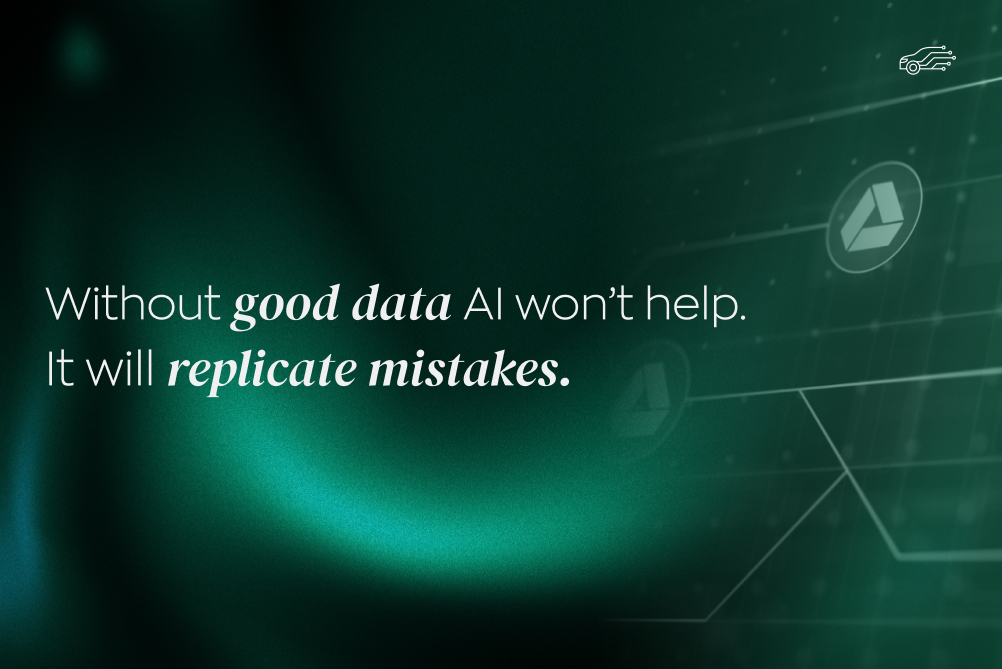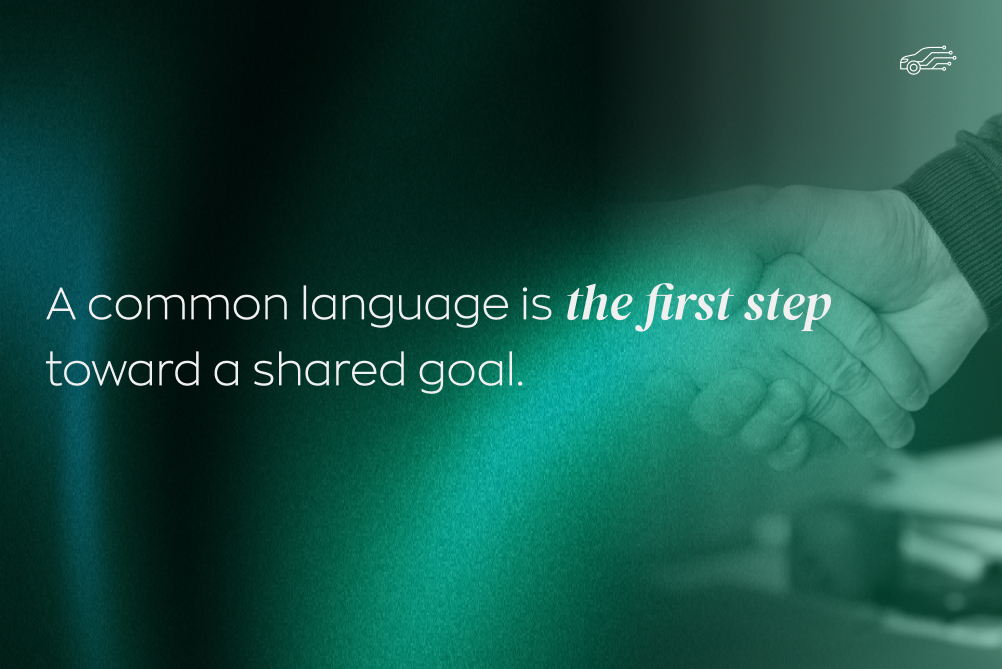AI - it's everywhere. Unless you've been ignoring headlines and news reports for the past few years, you've undoubtedly heard about the impact that artificial intelligence and machine learning have on nearly every industry, software development among them.
While the potential of AI in software development is undeniable, businesses need to understand the challenges associated with its implementation and how best to leverage this powerful technology for competitive advantage.
The release of ChatGPT from AI company OpenAI brought the power of large learning models to developers, and the technology is only becoming more advanced.
So as a business, how can AI and software development begin to work together? And what should your organization begin to do to ensure that you aren't left behind in the AI revolution?
The evolution of AI in software development
AI has been used in software development for years. It's already been successfully applied to tasks such as natural language processing, machine vision, and even marketing automation.
However, the recent advances in deep learning and AI technology have allowed for more sophisticated applications of AI in software development.
But to understand just how impactful AI may be in the years ahead, it's helpful to turn back the clock and look at how AI has evolved - and why your business needs to connect with experts to navigate the days ahead.
In the early days, AI was used mainly to automate tasks such as bug testing and code refactoring, which is still a valuable application of artificial intelligence today. And while AI has been a part of science fiction for years, it wasn't until the 1950s that the notion of using it to build software first emerged.
A few decades later, AI experienced a significant breakthrough by introducing expert systems that relied on machine learning and decision-making algorithms to make decisions and solve problems.
This technology quickly spread rapidly throughout the tech industry — from healthcare to manufacturing — and is still used today in many areas.
In recent years, AI has become increasingly intertwined with software development. Software development has taken on a more intelligent form, with AI being used to automate the entire software development lifecycle, from writing code and testing it to deploying and monitoring applications.
The implications of AI in software development
Software development plays a key role in business development - everything from customer service to financial planning. AI technology has enabled software developers to build smarter, more efficient applications that can anticipate and respond to user needs in real-time.
The key idea is to reduce the amount of time and money businesses need to invest in software development. By leveraging AI, companies can speed up the process while improving quality and accuracy. In addition, AI-assisted software development delivers greater insights into user behavior that can help improve product design and customer experience.
Here are just a few of the implications that AI has on software development:
Increased efficiency in software development
A key advantage of AI-assisted software development is the ability to identify and prioritize tasks. By leveraging predictive analytics, AI can help developers determine which tasks are most important to complete first, eliminating the need for manual research and guesswork. This leads to improved efficiency and shorter lead times in software development projects.
One area where AI will continue to improve efficiency is through automation. According to Gartner, there will be an emphasis on enhancing the processes needed to operate models. This includes MLOps, DataOps, and PlatformOps - collectively called XOps.
These technologies will be able to automate many of the mundane tasks that developers currently perform, freeing them up to focus on more challenging and exciting work.
Improved quality control
AI also has an impact on quality control. AI-powered automated testing can detect and fix software defects faster than manual processes.
This helps developers ensure that their applications meet the highest quality standards. When combined with predictive analytics, AI-driven testing can also reduce the time and money spent on debugging and reworking code.
More accurate predictions for user behavior
Another aspect of AI is its ability to analyze user behavior. By leveraging machine learning, developers can anticipate user needs ahead of time and create software that meets their expectations.
This has a direct impact on customer satisfaction rates and product performance - ensuring that applications are better tailored to user needs.
Automated coding and application builds
AI can also automate many of the tedious tasks associated with software development. For example, AI-driven code refactoring tools can automatically convert existing code into more efficient formats.
Imagine the time savings of automated coding and application builds. That's just one of the many ways that AI can improve software development.
And when it comes to improving the customer experience, AI-driven predictive analytics tools can help developers better anticipate user needs and create more personalized experiences.
Security and compliance
Another key consideration when incorporating AI into software projects is security and compliance. It's essential to ensure that any applications built with AI technology meet industry-specific regulatory requirements. Businesses should also consider using encryption technologies to prevent unauthorized access to sensitive data.
One area where compliance will play a key role is in muti-modal learning. Tools such as Gato and Google DeepMind - which utilize a variety of input data to create more accurate models - could be subject to different regulations depending on the type of data used.
As a result, developers should make sure they understand the relevant compliance requirements before deploying an AI-powered application. However, the implications of these tools bring exciting possibilities that could help businesses stay on the right side of legal and ethical requirements.
Rapid bug detection and resolution
No software is perfect, and bugs are to be expected.
Fortunately, AI-driven bug detection tools can quickly identify problems in code and suggest actions to resolve them. This reduces the amount of time spent troubleshooting issues and helps developers maintain product quality.

Key AI use cases within software development
The above benefits are clear - and showcase how AI can help software developers improve the development process. But what are some of the key use cases for AI within software development? Here are a few to consider:
1. Automated code refactoring and application building
Within the software development field, code refactoring is how existing code is analyzed and transformed into a more efficient format. Traditionally, this process was done manually, but AI-based tools can now automate the process and help developers build applications faster.
For instance, AI-powered code analysis tools can detect patterns in source code and suggest optimal ways to refactor it. This reduces the amount of time spent on manual coding and helps developers focus their energy on creating better applications. Rather than spending hours debugging code, developers can use AI-driven tools to quickly create better software.
2. Improved user interface (UI) design and testing
Nothing beats a seamless user experience. AI can help software developers create stunning UIs by using natural language processing (NLP) to generate UI designs based on customer needs.
This helps developers quickly create interfaces that are tailored to a specific user group, making the experience more intuitive and enjoyable.
AI development within UI and UX can also help automate the testing process by running simulations of user interactions on different platforms. This helps developers gain insights into how users interact with the software, enabling them to quickly diagnose errors and make necessary changes.
By leveraging AI-driven UI and UX development, businesses can create better user experiences for their customers that are tailored to their needs - and build upon learning data that can be used to improve their products in the future.
3. Automated code reviews
Coding teams spend hours manually reviewing code, often resulting in long delays and costly mistakes. Yet this time is essential - as a single error can spell disaster for a project.
But what if code reviews could be automated? And what if AI-driven development tools could identify potential issues within those reviews and recommend the best solutions?
That’s where AI and machine learning can help. AI-based tools can automatically review and test code for errors, making the development process much faster and more efficient. And because these tools are constantly learning from their data set, they become even more accurate over time - reducing the need for manual code reviews.
By using automated code reviews powered by AI, businesses can save on costs while drastically reducing the amount of time it takes to develop a project.
4. Advanced data analytics
Data analytics is an essential part of software development, as it helps businesses understand how their products are performing and where improvements can be made.
When data isn't collected, compiled, consumed, and curated, businesses struggle to optimize performance and achieve their goals.
But with AI-driven data analytics, businesses can collect more accurate insights faster than ever before. By leveraging advanced machine learning algorithms, these tools can quickly process large amounts of data and provide easily digestible statistics that developers need to understand user behavior. This helps them identify any areas of improvement or potential risks in their project.
5. Automation of development processes
AI can also be used to automate a range of tedious and time-consuming tasks, such as writing code or testing for errors. Tools like Autonomous Code Writing (ACW) or Program Synthesis Engine (PSE) are designed to generate code based on set parameters.
Again, the concepts of AutoML will play a key role in the development of such automation tools, enabling developers to use natural language and other forms of input to expedite their workflow.
AI-based testing tools can sift through enormous amounts of data and detect any errors faster than human testers ever could. This helps ensure that only the most reliable code is released into production - helping businesses save time and money in the long run.
In addition, AI-assisted project management tools can drastically reduce time spent on repetitive tasks such as task assignment and monitoring. This frees up developers’ time to focus on their core projects, leading to better output and improved product quality.
6. AI in web and mobile app development
Finally, there’s been a lot of progress made in using AI for web and mobile app development. Today's consumers increasingly expect interactive and personalized experiences from their apps, making it more critical than ever for developers to create intuitive user interfaces.
AI can help here, too, by providing intelligent algorithms that can recommend the best design elements or features in an app.
In addition, AI-driven analytics tools can track and measure user behavior, giving businesses access to valuable insights that can help them improve their apps over time.
The intersection of AI and Agile Methodologies
One area where AI is quickly growing into the mainstream is Agile software development. Agile frameworks are designed to enable rapid and iterative product development, which often requires more data-driven decisions than traditional “waterfall” approaches.
In most Agile scenarios, AI and Machine Learning can be used to analyze current data points and predict future outcomes. There are a variety of ways that this can benefit a project:
1. AI-driven product ideation and development
AI can help developers identify new and innovative features to add to their projects by analyzing user behaviors and trends. This helps them determine which ideas are feasible and which ones have a better chance of success.
2. Automation of Agile processes
Most Agile methodologies rely heavily on manual processes, such as sprint planning and task assignment. AI-based automation tools can help streamline these processes, making it easier for developers to stay on track.
3. Improved resource allocation
By leveraging AI-driven analytics, companies can better allocate resources across projects in order to maximize efficiency and optimize outcomes. This includes assigning the right people to the right tasks at the right times.
4. Improved team collaboration: AI can be used to improve communication across teams by using natural language processing and sentiment analysis to capture how employees feel about their work. This can help identify potential problems before they arise and ensure everyone is on the same page.
Bringing AI Into IT Consultancy
As businesses begin to look toward AI for software development solutions, it is important to consider how this technology can be implemented safely and securely.
AI-trained IT consultancy firms will quickly crop up - promising more accurate and cost-effective solutions than their traditional counterparts. Companies should look for firms that abide by security standards such as ISO/IEC 27001 while meeting requirements set forth by larger governing bodies such as the GDPR.
At the same time, it is equally important to consider any potential ethical risks associated with AI tools and services.
Companies must be mindful of the data they collect, how it is used and stored, and how AI-driven decisions are made. The tools are still in the early stages, and it is essential that businesses properly vet potential AI partners to ensure their data remains safe and secure.
Harness AI for your business software needs
So, the benefits of AI and machine learning are clear - but how can businesses make the most of these tools for software development?
The first step is choosing a reliable partner who understands the nuances of AI. It is also essential to consider what you are trying to achieve with your AI-driven project - and create a strategy to achieve those goals.
Look for partners with experience in specific industries or who have created AI-infused products or services for other businesses. This can give you an idea of how the technology has been implemented in a real-world setting and inform your decision on whether it suits your project.
Plus, when you work with an AI-specific partner, you get access to experts who can walk you through the design process and help you identify potential pitfalls. With their expertise, you can create a tailored solution that meets your business’s exact needs.
.jpg)




.webp)




.png)



.jpg)
.jpg)


.jpg)
.jpg)



.jpg)
.jpg)
.jpg)
.jpg)
.jpg)
.jpg)

.jpg)
.jpg)
.jpg)
.jpg)
.jpg)
.jpg)
.jpg)
.jpg)
.jpg)
.jpg)






.jpg)
.jpg)
.jpg)

.jpg)

.jpg)


.jpg)
.jpg)

.jpg)
.jpg)

.jpg)

.jpg)
.jpg)
.jpg)

.jpg)
.webp)

.webp)


.jpg)









.webp)


.webp)




















